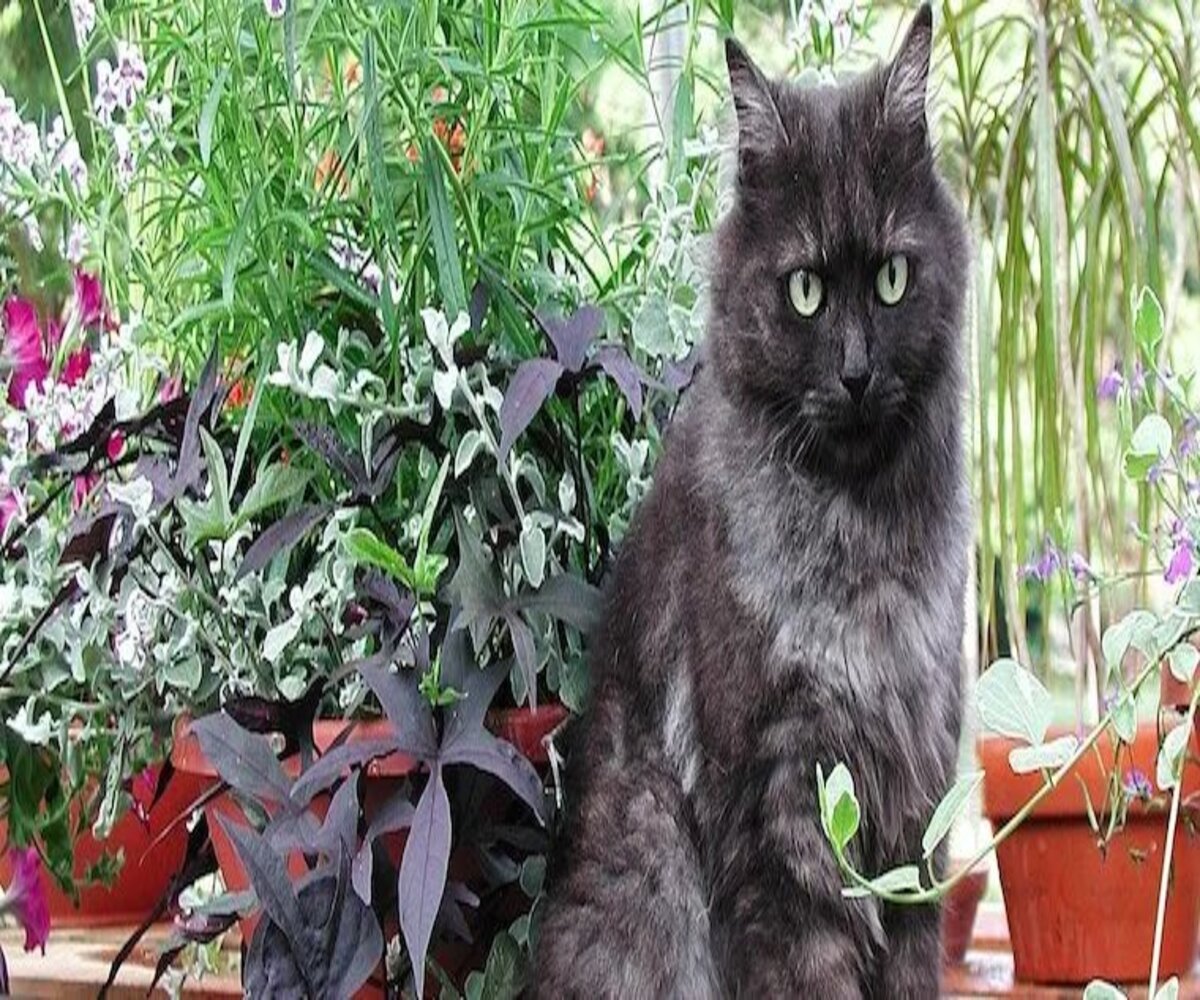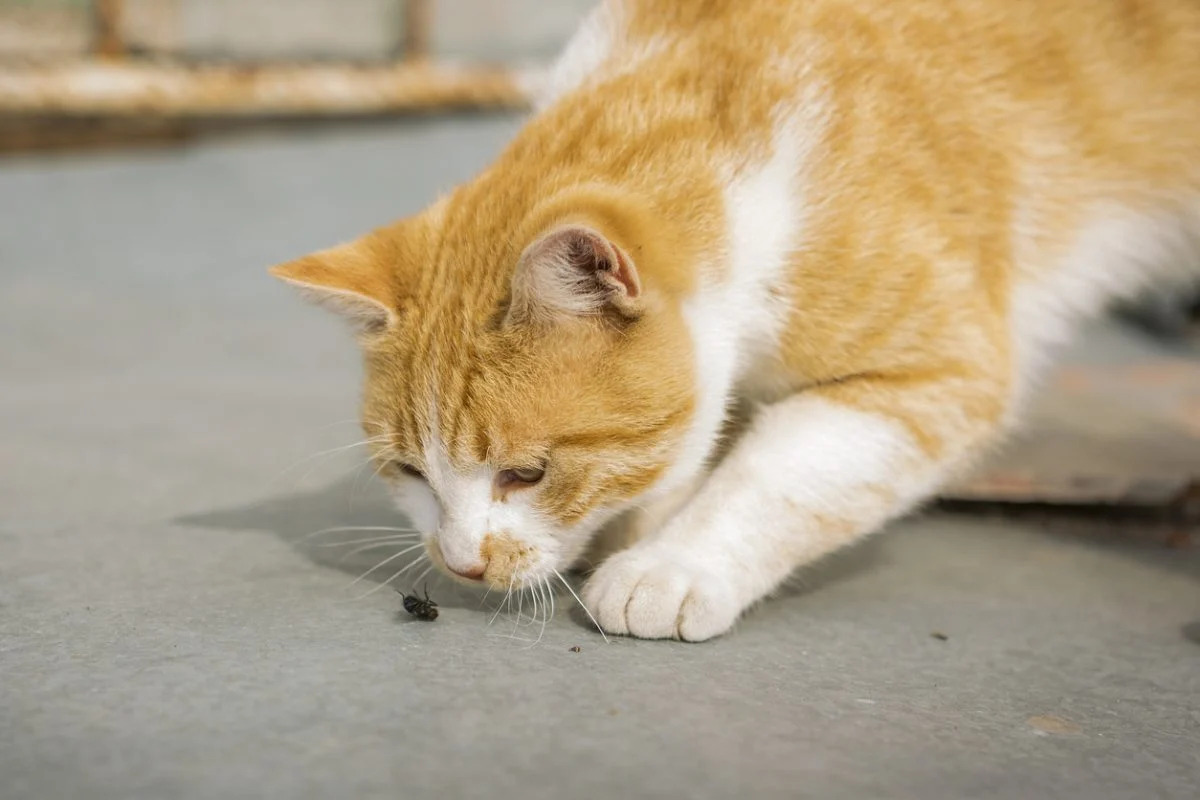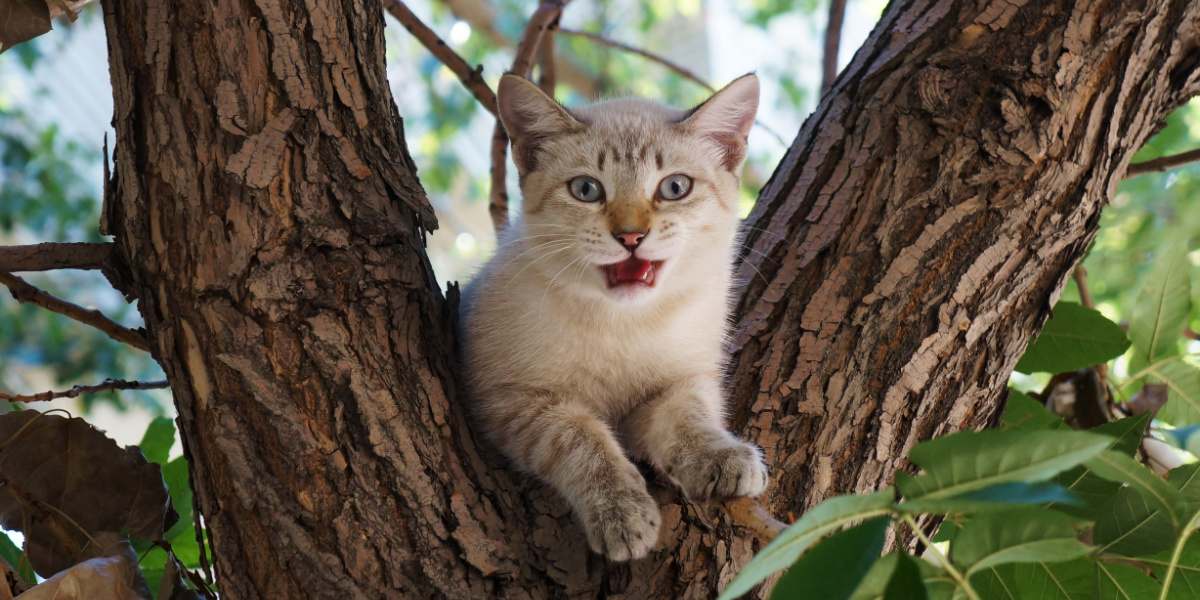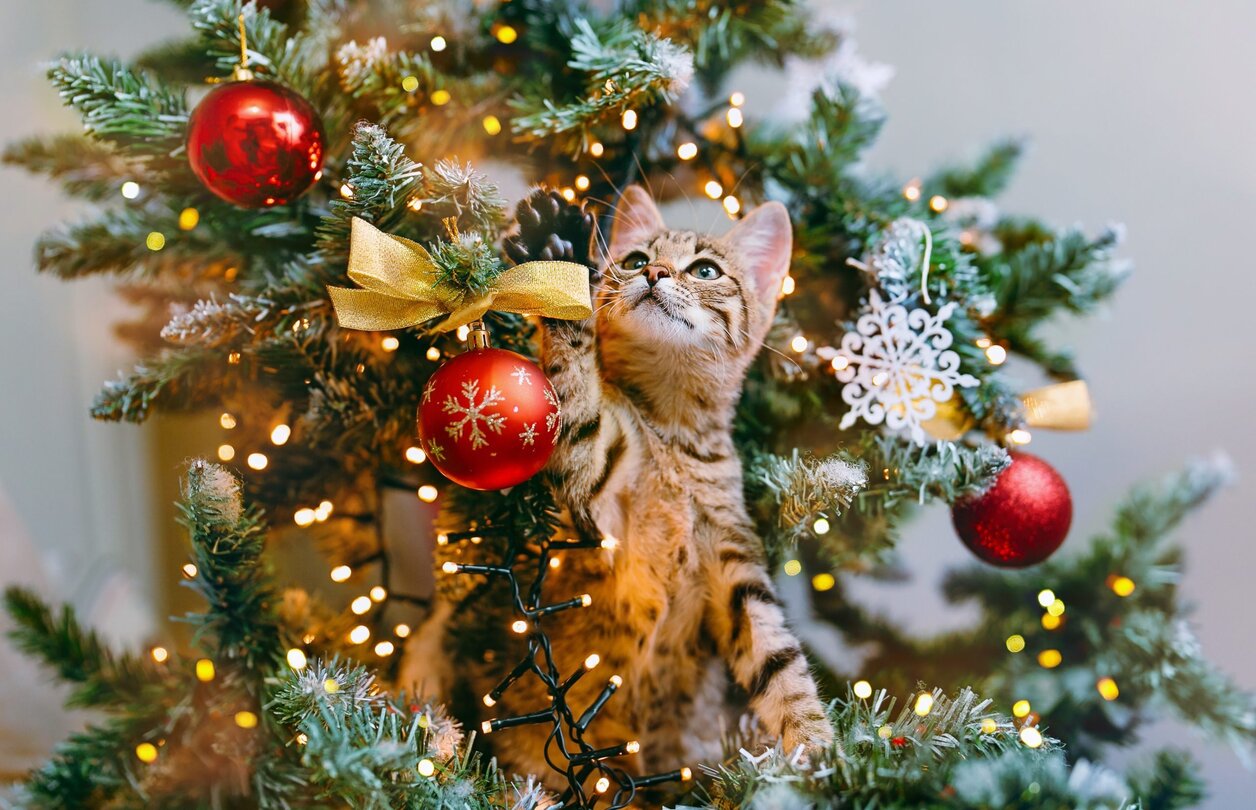Home>Gardening Basics>Understanding Soil>How To Neutralize Cat Feces In Soil


Understanding Soil
How To Neutralize Cat Feces In Soil
Modified: February 9, 2024
Learn how to neutralize cat feces in soil and improve your understanding of soil composition and health.
(Many of the links in this article redirect to a specific reviewed product. Your purchase of these products through affiliate links helps to generate commission for Chicagolandgardening.com, at no extra cost. Learn more)
Table of Contents
- Introduction
- Understanding the Impact of Cat Feces in Soil
- Factors Affecting Cat Feces Decomposition in Soil
- Potential Risks and Hazards Associated with Cat Feces in Soil
- Step-by-Step Guide to Neutralizing Cat Feces in Soil
- Method 1: Composting Cat Feces in Soil
- Method 2: Vermicomposting Cat Feces in Soil
- Method 3: Using Microorganisms to Break Down Cat Feces in Soil
- Precautions and Safety Measures
- Conclusion
Introduction
Welcome to our comprehensive guide on how to neutralize cat feces in soil. Cats are beloved pets, but their feces can have a significant impact on soil quality and the overall health of your garden. Understanding how to effectively deal with cat feces in soil is essential for maintaining a vibrant and thriving garden.
When cats use your garden as a litter box, the feces they leave behind contain harmful bacteria, parasites, and pathogens that can pose risks to both humans and other animals. These contaminants can contaminate the soil, leading to potential health hazards.
Fortunately, there are methods you can employ to neutralize cat feces in soil, minimizing the risks associated with their presence. In this guide, we will explore the factors that affect cat feces decomposition, the potential risks they pose, and step-by-step instructions on how to effectively neutralize cat feces in your garden soil.
By following the methods provided in this guide, you will not only protect your garden and the health of those around it but also create a safe and fertile environment for your plants to thrive.
Understanding the Impact of Cat Feces in Soil
Cat feces can have a significant impact on soil quality and the overall health of your garden. When cats use your garden as a litter box, their feces introduce a variety of contaminants into the soil.
One of the primary concerns with cat feces in soil is the presence of harmful bacteria and parasites. Cat feces can contain pathogens such as Toxoplasma gondii, which can cause serious health issues in humans, especially pregnant women and individuals with weakened immune systems. These pathogens can contaminate the soil and potentially be transmitted to humans through direct contact or even indirectly through fruits and vegetables grown in the garden.
In addition to bacteria and parasites, cat feces also introduce excessive amounts of nitrogen into the soil. While nitrogen is a necessary nutrient for plant growth, an excess can lead to imbalances and negatively impact the health of your plants. This can result in stunted growth, yellowing leaves, and an overall decline in productivity.
Furthermore, the presence of cat feces in soil can attract pests, such as flies and rodents, which may further damage plants and invade your garden. These pests can spread diseases and disrupt the delicate ecosystem of your garden.
It is important to note that the impact of cat feces in soil can vary depending on factors such as the quantity of feces, the frequency of use, and the type of soil. In general, sandy soils have a lower capacity to retain and break down contaminants, making them more susceptible to the harmful effects of cat feces compared to clay or loamy soils.
Now that we understand the potential impact of cat feces in soil, it is crucial to take steps to neutralize it effectively. In the following sections, we will explore various methods to mitigate the risks associated with cat feces in soil and restore the health and fertility of your garden.
Factors Affecting Cat Feces Decomposition in Soil
The decomposition of cat feces in soil is influenced by several key factors that determine how quickly and effectively it breaks down. Understanding these factors can help you make informed decisions when it comes to neutralizing cat feces in your garden.
1. Soil Type
The composition and texture of the soil play a crucial role in cat feces decomposition. Sandy soils tend to have lower organic matter content and less moisture retention, which can hinder the breakdown process. On the other hand, clay or loamy soils have a higher capacity for nutrient retention and microbial activity, promoting faster decomposition.
2. Moisture
Adequate moisture is necessary for the microbial activity that breaks down cat feces. When the soil is too dry, decomposition slows down, and the feces may remain in the soil for longer periods, increasing the risk of pathogen accumulation. Maintaining proper soil moisture levels is essential for optimal decomposition.
3. Temperature
The temperature of the soil affects microbial activity and the rate of decomposition. Warmer temperatures speed up the decomposition process, while colder temperatures slow it down. In colder climates, the breakdown of cat feces may take longer, requiring extra precautions to mitigate potential risks.
4. pH Level
The pH level of the soil can influence the decomposition process. Microbes responsible for breaking down organic matter thrive in neutral to slightly acidic conditions. If the soil pH is too high or too low, it can inhibit the activity of these microbes, affecting the decomposition of cat feces.
5. Organic Matter Content
The presence of other organic matter in the soil can impact the decomposition of cat feces. High levels of organic matter can provide additional nutrients and microbial activity, accelerating the breakdown of fecal matter. Incorporating organic amendments, such as compost or well-rotted manure, can enhance the decomposition process.
By considering these factors, you can better manage cat feces in soil and create optimal conditions for decomposition. In the next section, we will explore the potential risks and hazards associated with cat feces in soil and why proper neutralization is crucial for the health of your garden.
Potential Risks and Hazards Associated with Cat Feces in Soil
The presence of cat feces in soil can pose several risks and hazards to both humans and the overall health of your garden. Understanding these risks is crucial for taking appropriate measures to mitigate them.
1. Bacterial and Parasitic Infections
Cat feces contain various bacteria, parasites, and pathogens that can cause infections in humans. One of the most well-known pathogens is Toxoplasma gondii, which can cause a severe illness called toxoplasmosis. Pregnant women and individuals with weakened immune systems are particularly vulnerable. Direct or indirect contact with contaminated soil can lead to infection.
2. Contamination of Fruits and Vegetables
When cat feces are present in the soil, there is a risk of contamination of fruits and vegetables grown in your garden. Consuming produce that has come into contact with contaminated soil can lead to the ingestion of pathogens, posing a health risk to those who consume them.
3. Environmental Impact
Excessive levels of nitrogen introduced by cat feces can disrupt the balance of nutrients in the soil. This imbalance can harm beneficial organisms, alter soil pH, and negatively impact the overall health of your garden ecosystem. The presence of cat feces can also attract pests that can cause further damage to plants and disrupt the natural ecology of your garden.
4. Spread of Zoonotic Diseases
Zoonotic diseases are infections that can be transmitted between animals and humans. Cat feces can serve as a source of zoonotic diseases, such as salmonella or campylobacteriosis, which can cause gastrointestinal issues and other health problems in humans.
It is essential to take these risks and hazards seriously and implement proper measures to neutralize cat feces in soil effectively. In the next section, we will provide a step-by-step guide on how to neutralize cat feces using various methods tailored to ensure the health and fertility of your garden.
Step-by-Step Guide to Neutralizing Cat Feces in Soil
Neutralizing cat feces in soil requires a systematic approach to ensure the complete breakdown of fecal matter and minimize the associated risks. Here is a step-by-step guide to help you effectively neutralize cat feces in your garden:
Step 1: Use Protective Gear
Before you begin handling cat feces, it is important to protect yourself. Wear disposable gloves, a face mask, and washable clothing that you can easily clean after the task.
Step 2: Remove Visible Feces
Start by removing any visible cat feces from the soil using a scooper or shovel. Place the feces in a secure bag or container to prevent contamination.
Step 3: Bury the Feces
Dig a hole in the ground at least 8-10 inches deep. Place the collected cat feces in the hole and cover it with soil. It is important to bury the feces deep enough to ensure proper decomposition and prevent animals from digging them up.
Step 4: Composting
If you have a compost pile or bin, you can add the collected cat feces to the composting process. However, it is crucial to note that cat feces should only be composted if the compost reaches high temperatures (above 140°F) to kill any potential pathogens. Avoid using the compost on vegetable gardens or areas where you grow food.
Step 5: Vermicomposting
Vermicomposting is the process of using worms to break down organic matter. Create a separate vermiculture system and add the cat feces, along with other compostable materials, such as shredded paper and vegetable scraps. Ensure proper maintenance of the vermicompost system by maintaining the right moisture and temperature conditions.
Step 6: Using Microorganisms
There are commercially available products that contain beneficial microorganisms specifically designed to break down pet waste. Follow the instructions on the product label for proper application and dosage. These microorganisms help accelerate the decomposition process and neutralize any potential pathogens.
Step 7: Regular Maintenance and Monitoring
Throughout the process, it is important to maintain proper moisture levels, monitor temperature, and regularly turn compost bins or monitoring systems. This promotes microbial activity and ensures efficient breakdown of cat feces.
Following these steps will help you effectively neutralize cat feces in your garden soil, minimizing the risks associated with their presence. However, it is important to keep in mind the precautions and safety measures that should be taken when handling cat feces, which we will discuss in the next section.
Method 1: Composting Cat Feces in Soil
Composting is a popular and effective method for neutralizing cat feces in soil. By utilizing the natural decomposition process, you can transform cat feces into nutrient-rich compost that can be used to fertilize your garden. Here’s how to compost cat feces in soil:
Step 1: Prepare a Compost Bin
Start by setting up a compost bin specifically for cat feces composting. Choose a location in your garden that is away from food crops and where the compost will not be disturbed or accessible to pets and wildlife.
Step 2: Collect Cat Feces
Using a scoop or shovel, collect the cat feces from the garden and place them in a separate container. Avoid mixing it with other organic matter initially.
Step 3: Create Layers
In your compost bin, start layering the cat feces with other compostable materials. Add a layer of brown materials such as dried leaves, shredded newspaper, or straw, followed by a layer of green materials such as grass clippings or kitchen scraps. Alternate these layers to create a well-balanced compost pile.
Step 4: Maintain Moisture and Aeration
Keep the compost pile moist, but not overly wet. Use a hose or watering can to lightly water the pile as needed. Additionally, turn the compost regularly with a pitchfork or compost turner to provide proper aeration and facilitate the decomposition process.
Step 5: Monitor Temperature
Check the temperature of the compost pile regularly. The optimal temperature range for composting is between 120°F to 160°F (49°C to 71°C). If the temperature drops below this range, turn the pile to increase microbial activity and temperature.
Step 6: Age the Compost
Allow the compost pile to mature for a minimum of 6-12 months. During this time, the cat feces will break down and mature into nutrient-rich compost. The compost should have a dark, crumbly texture and an earthy smell.
Step 7: Use the Compost
Once the compost is fully matured, it is ready to be used in your garden. Spread the compost around your plants, mixing it into the top few inches of soil. This will help improve soil fertility, structure, and overall plant health.
Composting cat feces in soil not only helps neutralize the feces but also reduces waste and provides a sustainable way to enrich your garden. However, it is important to note that cat feces compost should not be used on edible crops or areas where children play to minimize the risk of contamination. Let’s move on to the next method, which involves using worms to break down cat feces.
Method 2: Vermicomposting Cat Feces in Soil
Vermicomposting, or composting with worms, is another effective method to neutralize cat feces in soil. By utilizing the digestive power of worms, you can break down cat feces into nutrient-rich castings that enrich the soil. Here’s how to vermicompost cat feces in soil:
Step 1: Set Up a Vermiculture System
Start by setting up a vermicomposting system specifically for cat feces. You can purchase a ready-made worm bin or create your own using a container with a lid, such as a plastic storage bin, with ventilation holes for air circulation.
Step 2: Create Bedding for the Worms
Add a layer of moistened bedding material to the bottom of the worm bin. Suitable bedding materials include shredded newspaper, cardboard, or coconut coir. The bedding should be damp, similar to a wrung-out sponge, and not overly wet.
Step 3: Introduce the Worms
Add red worms (Eisenia fetida) or another species of composting worms to the bedding. Start with a small number of worms, and gradually increase the population as the worms multiply and the bin becomes established.
Step 4: Add Cat Feces and Additional Organic Matter
Gradually introduce small amounts of cat feces to the vermicomposting system. It’s important to limit the amount of cat feces, as too much can overwhelm the worms. Add additional organic matter such as fruit and vegetable scraps, coffee grounds, and crushed eggshells to provide a balanced diet for the worms.
Step 5: Maintain Moisture and Temperature
Keep the vermicomposting system moist, but not waterlogged. Optimal moisture levels should feel like a damp sponge. Monitor and maintain the temperature of the bin between 55°F and 77°F (13°C and 25°C) to ensure the worms remain active and efficient in breaking down the cat feces.
Step 6: Harvest the Castings
After a few months, the worms will have transformed the cat feces and organic matter into nutrient-rich castings. To harvest the castings, create a separation zone in the bin. Gradually move the undigested materials and remaining worms to one side, and scooping out the finished vermicompost from the other side.
Step 7: Incorporate Castings into Soil
Mix the vermicompost, including the castings, into your garden soil. The rich nutrients and microorganisms in the castings will improve soil fertility, structure, and overall plant health. Avoid applying the castings to edible crops or areas where children play to minimize the risk of contamination.
Vermicomposting cat feces in soil not only effectively neutralizes the feces but also creates high-quality organic fertilizer for your garden. The process also helps reduce waste and promotes sustainability. However, it is essential to maintain proper conditions and provide the worms with a suitable environment to ensure their optimal function. In the next section, we will explore another method that involves using microorganisms to break down cat feces in soil.
Method 3: Using Microorganisms to Break Down Cat Feces in Soil
Using microorganisms to break down cat feces in soil is an effective and convenient method that promotes rapid decomposition and neutralization. These specialized microorganisms are designed to target and digest the organic matter present in the cat feces, thus reducing the risks associated with their presence. Here’s how to utilize microorganisms to break down cat feces in soil:
Step 1: Select the Appropriate Microorganism Product
Look for commercially available microorganism products specifically designed for breaking down pet waste. These products contain a blend of beneficial bacteria and enzymes that aid in the decomposition process. Ensure the product is safe for use in a garden environment and follow the instructions provided.
Step 2: Prepare the Cat Feces for Treatment
Collect the cat feces from the garden and place them in a container. Remove any visible debris, such as litter or non-compostable material, as it may inhibit the effectiveness of the microorganisms. Break up any clumps to facilitate better microbial penetration.
Step 3: Apply the Microorganism Product
Follow the instructions on the microorganism product to determine the appropriate dosage and application method. Typically, the product will need to be diluted in water. Use a watering can or sprayer to apply the diluted solution evenly over the cat feces and the surrounding soil.
Step 4: Maintain Moisture and Temperature
To facilitate the activity of the microorganisms, maintain the proper moisture level in the soil. Adequate moisture allows the microorganisms to thrive and break down the cat feces efficiently. Additionally, ensure the temperature remains within a suitable range for microbial activity, typically around 50°F to 95°F (10°C to 35°C).
Step 5: Monitor and Repeat if Necessary
Observe the decomposition process over time. The microorganisms will gradually break down the cat feces, converting them into organic matter that enriches the soil. If needed, repeat the application of the microorganism product to ensure complete breakdown and neutralization of the feces.
Step 6: Incorporate Treated Soil into the Garden
Once the microorganisms have effectively broken down the cat feces, mix the treated soil back into your garden. This ensures that the nutrients from the decomposed feces are distributed throughout the soil, benefiting your plants and promoting overall soil health.
Using microorganisms to break down cat feces in soil offers a convenient and efficient solution, especially for managing larger quantities of feces. It is important to follow the instructions provided by the microorganism product manufacturer and maintain suitable conditions to optimize microbial activity and decomposition. In the next section, we will discuss precautions and safety measures to consider when dealing with cat feces in soil.
Precautions and Safety Measures
When dealing with cat feces in soil, it is essential to take precautions and follow safety measures to protect yourself, others, and the environment. Here are some important precautions to keep in mind:
1. Use Protective Gear
Wear disposable gloves, a face mask, and washable clothing when handling cat feces. This will help prevent direct contact and minimize the risk of bacterial or parasitic infections.
2. Wash Hands Thoroughly
After handling cat feces, it is important to wash your hands thoroughly with soap and water. Use hand sanitizer if soap and water are not readily available.
3. Avoid Contact with Face and Mouth
Avoid touching your face, especially your mouth and eyes, when handling cat feces. This will reduce the risk of ingesting harmful bacteria or parasites.
4. Dispose of Feces Properly
When removing cat feces from the garden, place them in a secure bag or container to prevent contamination. Dispose of the feces in the trash or through proper waste management systems.
5. Limit Feces Use in Edible Gardens
Do not use cat feces compost or treated soil in areas where edible crops are grown. This will prevent the potential transfer of pathogens to the food you consume.
6. Keep Children and Pets Away
Ensure that children and pets are kept away from areas contaminated with cat feces. Restrict access to the garden until the feces are properly neutralized and the area is safe.
7. Clean and Disinfect Tools
After handling cat feces or working in contaminated areas, clean and disinfect any tools or equipment used to prevent cross-contamination.
8. Monitor for Signs of Illness
If you or others who have been in contact with cat feces develop any signs of illness, such as gastrointestinal symptoms or flu-like symptoms, seek medical attention promptly.
By following these precautions and safety measures, you can minimize the risks associated with cat feces in soil and create a safe environment for gardening activities. Remember that good hygiene practices and responsible waste management are essential for maintaining a healthy garden ecosystem.
Conclusion
Dealing with cat feces in soil requires careful consideration to protect the health of your garden and the well-being of those who interact with it. Understanding the impact of cat feces in soil, the factors that affect its decomposition, and the potential risks and hazards associated with it is crucial.
Fortunately, there are effective methods available to neutralize cat feces in soil. Composting, vermicomposting, and utilizing microorganisms are all viable options that promote the breakdown of cat feces and the transformation of organic matter into nutrient-rich compost or soil amendments.
Regardless of the method you choose, it is essential to follow proper precautions and safety measures when handling cat feces to minimize the risk of infections and other health issues. Wearing protective gear, maintaining good hygiene practices, and disposing of cat feces properly are all important steps to protect yourself and others.
Remember that cat feces should be kept away from areas where edible crops are grown, and extra care should be taken to prevent the transfer of pathogens to food sources. By implementing these precautions and safety measures, you can ensure a safe and healthy gardening environment.
It is our hope that this comprehensive guide has provided you with valuable insights and practical steps to effectively neutralize cat feces in soil. By taking the necessary precautions and following the recommended methods, you can maintain a vibrant and thriving garden while prioritizing the well-being of all those who enjoy it.






